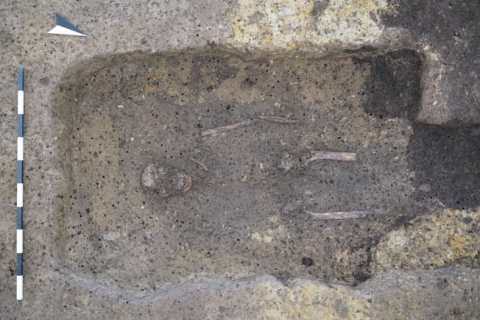Wooden Celtic 2,600-year-old burial chamber uncovered in southern Germany

A remarkably well preserved 2,600-year-old wooden Celtic burial chamber has been uncovered by archaeologists in southern Germany. The wooden burial chamber was revealed within a large burial mound with a diameter of 65 metres and a height of almost six metres dating from the early Celtic period. Its size led archaeologists to identify the entire complex as a mound that the Celts built in southwestern Germany for elite individuals dating between 620 and 450 B.C. The preserved wood will enable archaeologists to use tree-ring dating to determine the exact year of the chamber. At present they have dated the wood of a possible tool left by Celtic builders to 585 BC.
At one time the Celtic peoples were spread over large parts of Europe and beyond. It is known that by around 275 BC, the Celts' influence and power stretched from the Atlantic seaboard in the west of Europe and included parts of the Iberian peninsula, the islands of Britain and Ireland, much of Western and Central Europe, part of Eastern Europe and into central Anatolia. There can be little doubt that the Celts viewed themselves in that period as an identifiable separate ethnically similar people speaking related Celtic languages. Sculptures carved at the time and found in many parts of Europe project a similar image of themselves over a significant geographical spread.
(Image: Courtesy of State Office for Monument Preservation in the Stuttgart Regional Council / Quentin Sueur)






